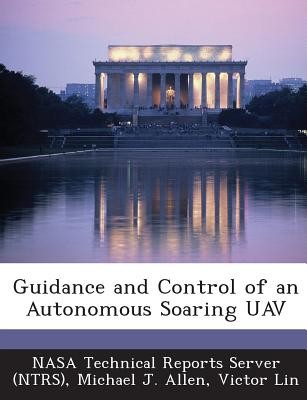
- We will send in 10–14 business days.
- Author: Michael J Allen
- Publisher: Bibliogov
- ISBN-10: 1289237182
- ISBN-13: 9781289237189
- Format: 18.9 x 24.6 x 0.2 cm, minkšti viršeliai
- Language: English
- SAVE -10% with code: EXTRA
Guidance and Control of an Autonomous Soaring Uav (e-book) (used book) | bookbook.eu
Reviews
Description
Thermals caused by convection in the lower atmosphere are commonly used by birds and glider pilots to extend flight duration, increase cross-country speed, improve range, or simply to conserve energy. Uninhabited Aerial Vehicles (UAVs) can also increase performance and reduce energy consumption by exploiting atmospheric convection. An autonomous soaring research project was conducted at the NASA Dryden Flight Research Center to evaluate the concept through flight test of an electric-powered motorglider with a wingspan of 4.27 m (14 ft). The UAV's commercial autopilot software was modified to include outer-loop soaring guidance and control. The aircraft total energy state was used to detect and soar within thermals. Estimated thermal size and position were used to calculate guidance commands for soaring flight. Results from a total of 23 thermal encounters show good performance of the guidance and control algorithms to autonomously detect and exploit thermals. The UAV had an average climb of 172 m (567 ft) during these encounters.
EXTRA 10 % discount with code: EXTRA
The promotion ends in 21d.19:18:57
The discount code is valid when purchasing from 10 €. Discounts do not stack.
- Author: Michael J Allen
- Publisher: Bibliogov
- ISBN-10: 1289237182
- ISBN-13: 9781289237189
- Format: 18.9 x 24.6 x 0.2 cm, minkšti viršeliai
- Language: English English
Thermals caused by convection in the lower atmosphere are commonly used by birds and glider pilots to extend flight duration, increase cross-country speed, improve range, or simply to conserve energy. Uninhabited Aerial Vehicles (UAVs) can also increase performance and reduce energy consumption by exploiting atmospheric convection. An autonomous soaring research project was conducted at the NASA Dryden Flight Research Center to evaluate the concept through flight test of an electric-powered motorglider with a wingspan of 4.27 m (14 ft). The UAV's commercial autopilot software was modified to include outer-loop soaring guidance and control. The aircraft total energy state was used to detect and soar within thermals. Estimated thermal size and position were used to calculate guidance commands for soaring flight. Results from a total of 23 thermal encounters show good performance of the guidance and control algorithms to autonomously detect and exploit thermals. The UAV had an average climb of 172 m (567 ft) during these encounters.


Reviews